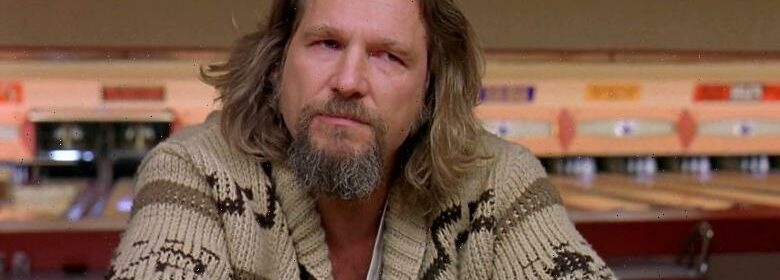Want Another Hollywood Revolution Like the ‘70s? Make Cult Classics (Column)

I always say that anyone who thinks it was a bad year for movies hasn’t seen enough of them, but last year, it was hard to get anyone to see movies, period. Box office declined at every level of the industry. A few massive blockbusters proved they could draw crowds, but unless you’re Tom Cruise or James Cameron, that doesn’t amount to much of a formula for future success. Horror movies like “Smile” proved that an efficient genre hook (and legitimate scares) can do the trick, and plenty of people are shouting “Everything Everywhere All at Once” from the rooftops as if this singular multiverse immigrant saga proved anything about the viability of cinema beyond its own unique appeal.
The potential for truly original filmmaking to succeed in America is broken, shattered into a million pieces by the ever-complicating economics of streaming, the downward trend of moviegoing attendance, and the cannibalizing effect of television.
With cracks in the system, however, opportunity can sneak in. That’s essentially what happened four decades ago, when the antiquated sensibility of Old Hollywood led to a series of duds and a new generation broke in with something truly new. It may sound like a cliché to worship ‘70s American cinema, but who can argue with the lasting appeal of everything from “Easy Rider” to “Taxi Driver,” truly iconoclastic movies made within the confines of the studio system? And there are reasons to believe, despite the ever-present gloominess, that such a wave of renewal could ride back into the machine, but under different economic conditions than before.
The new state of the marketplace mandates that every movie has long-term value that goes well beyond its theatrical lifespan. Sure, “TÁR” was a dud in wide release, but it could become a major value-add to distributor Focus Features’ parent company Universal as it continues to invest in building out its library. People will watch that movie — on Peacock or elsewhere — for years to come, as Lydia Tár becomes destined to cement her status as one of the great cinematic anti-heroes of the 21st century. That’s a tremendous aesthetic achievement by writer-director Todd Field and Cate Blanchett, but it also has commercial ramifications: They created something so singular that it could be discovered and appraised down the line, which means more business. Few companies can build their entire identity around that possibility (even A24 is angling to go more commercial), but it means that artful filmmaking really does still have a role in play in modern-day Hollywood.
“TÁR”
©Focus Features/Courtesy Everett Collection
This kind of outcome is nothing new: Twenty-five years ago, Universal brought “The Big Lebowski” to Sundance, and it went on to gross a meager $17 million at the box office, but The Dude gradually became legend. Now, it’s one of the studio’s most in-demand titles.
It’s hard and perhaps unreasonable to scale a business on the basis of success that could arrive years, maybe even decades, down the line. But it provides a sense of direction for anyone in the industry who isn’t exclusively in the blockbuster business. Down with the middlebrow dramas, the frivolous romcoms, the rambling road trip coming-of-age stories. They had a nice run. Look for original cult classics as a template for the future.
Brace for a lot of dour stories about this year’s Sundance market as buyers demonstrate their reticence to any movie deemed “difficult” day by day. I’ve heard variations of this grim prediction by more than a few industry folks in recent weeks, but always followed by some variation of the same caveat: Maybe there aren’t a lot of commercial movies at Sundance, but what does “commercial” even mean these days? The old metrics for success have given way to a murkier landscape, though not one without some kind of unifying equation. As strange as it might sound, a movie like “Eraserhead” made in 2023 could have more commercial potential than “The Fabelmans.”
While “streaming movies” has started to become something of a pejorative, streaming has become the ultimate destination that every other facet of the business (including theatrical) must serve. And in order to stand out in that cluttered mess of content, the movies have to make the investment worthwhile. They can’t just be good; they have to be memorable, adventurous, conversation-starting gambles that go beyond the obvious. That itself might sound obvious, but it demands repetition. Directors and producers must push to tell stories that leave a mark, evade conventions, surprise, shock, or even mystify audiences at every turn. There’s a reason why directors like Ari Aster, the Daniels, and Ana Lily Amirpour have generated followings in recent years on the basis of only a few movies: They’re not like anything else out there, people will return to their work over time, and they add value to the libraries that possess their work. These are true 21st century cult filmmakers — not niche or mainstream, but somewhere in between, and well-situated for the new paradigm of the industry.
In order for a ‘70s-style revolution in Hollywood to take shape, it has to come from savvy executives and storytellers who recognize that these movies won’t cement their status in the culture right away. Patience is a virtue few can appreciate in today’s attention-addled environment, but it might just be the missing ingredient that could save the movies from oblivion.
As usual, I invite feedback to this week’s column, and look forward to exploring the sustainability of this medium in the weeks ahead with Sundance around the corner. Write me: [email protected]
Check out previous columns here.
Source: Read Full Article

